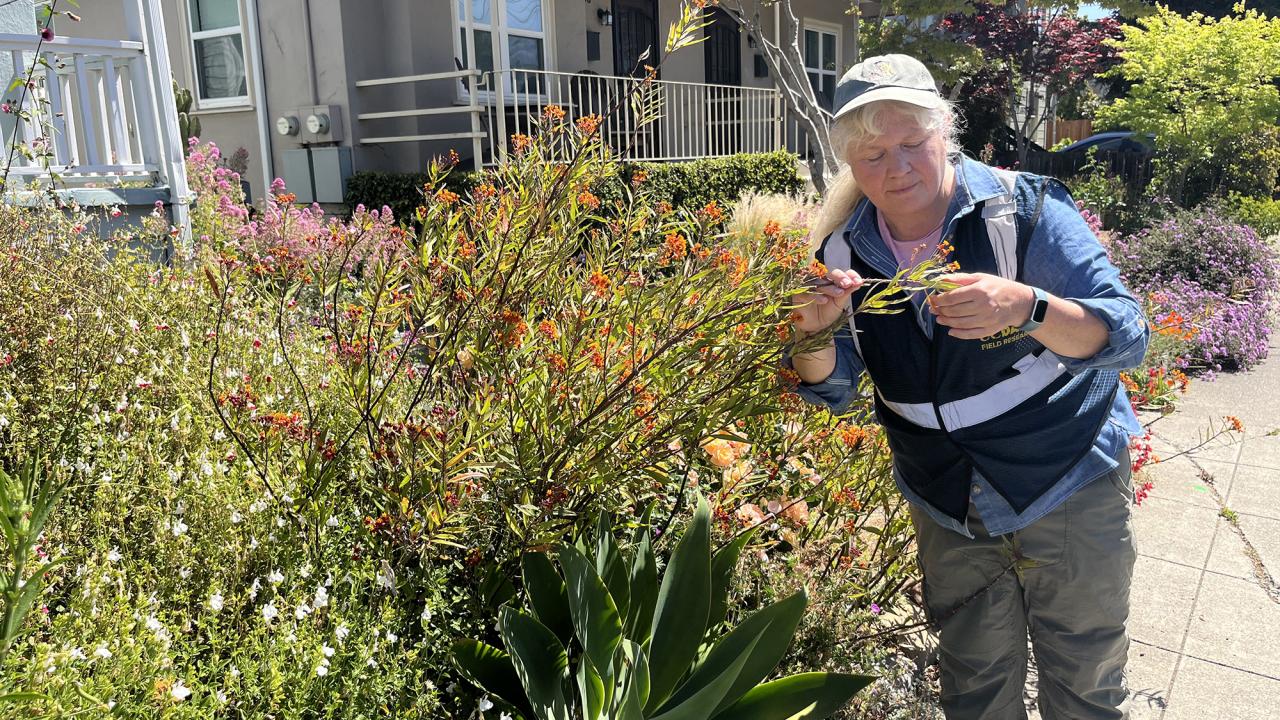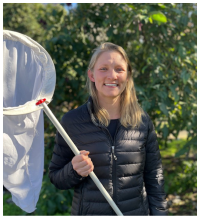
City-Dwelling Monarch Butterflies Stay Put
New Study Says Non-Native Milkweeds Don’t Help or Harm Migratory Monarch Butterflies
Monarch butterflies are famous for their annual migrations, but not all migrate. In recent years, more and more monarchs have been living and breeding year-round in California’s Bay Area, thanks in part to the growing presence of non-native milkweeds in urban gardens.
In a new study published in Ecosphere, University of California, Davis, researchers show that these resident butterflies are not connected to the larger population of monarchs known for their late-autumn coastal migrations. Their work suggests that resident monarchs and the non-native milkweeds that sustain them are not harmful to their migratory kin.
“Some people believe that these resident populations are a major cause of monarch butterfly populations declining, but our research suggests it's a bit of a red herring,” said senior author Elizabeth Crone, a professor in the Department of Evolution and Ecology. In fact, said Crone, “Our results highlight the potential for urban ecosystems to contribute to the conservation of some species. In the West, resident monarchs can persist in urban gardens without impacting fluctuations in migratory monarchs.”

To migrate or not to migrate?
Historically, monarch butterflies in the western United States spent their summers feeding on nectar and breeding in inland California, Arizona, Nevada, Oregon, Washington, Idaho and Utah before migrating to coastal California for the winter. While this migratory population has plummeted in the past decade, more and more monarch butterflies have become year-round residents in coastal Californian cities.
“Although in many ways monarchs seem to be doing just fine in cities, there are a lot of concerns that these non-migratory populations build up high levels of parasites, even to the point that some counties have outlawed planting the non-native evergreen milkweeds that monarch butterflies use in winter,” said Crone. “We were curious about whether the establishment of these resident populations was a conservation success story or a conservation disaster.”

Are resident monarchs good for conservation?
To investigate whether resident monarchs are interacting with the migratory population, the researchers surveyed East Bay neighborhoods during 2022 and 2023. Each month, they walked through 15 three mile-long routes and recorded the number of milkweed plants (both native and non-native) on the roadside and in people’s front yards. They also counted monarch eggs, caterpillars and butterflies, and used nets to temporarily capture adult butterflies so they could test for parasite infections.
The team found that both native and non-native milkweeds were common throughout the area, though more milkweed plants were present in summer than winter. Monarch eggs and adult butterflies were found on both native and non-native milkweeds.

Adult monarchs were most numerous in summer and least abundant in winter. Similarly, the number of adult butterflies with heavy parasite burdens declined over winter and increased during the summer and fall. These patterns suggest that migratory monarchs are not joining the resident population during their migrations to and from the coast in fall and spring.
“As far as we can tell, these resident monarchs in urban areas are almost unconnected from the migratory population, so helping resident monarchs likely doesn't help or hurt the migratory population,” said first author Emily Erickson, who worked on the study as a postdoctoral fellow in Crone’s lab and now works at the ecological consulting firm Second Nature Ecology + Design. “I think it's reasonable to focus on planting native milkweeds, but ripping out all of the milkweeds in urban gardens in the Bay Area or in Los Angeles does not need to be the immediate focus for monarch conservation.”
Planting to support pollinators

Although their results do not suggest that resident monarch populations will be able to save the declining migratory population, the researchers said that their study highlights other benefits of supporting wildlife in cities.
“Having people see monarch butterflies every day makes them want to invest in the conservation of butterflies, and in conservation in general,” said Erickson. “And no matter what milkweed you're planting, native or non-native, it supports a lot of things beyond monarchs.”
The study was funded by a donation from Google, who have been promoting and investing in monarch butterfly habitat since 2021.
“We are really grateful to Google,” said Crone. “It was a unique opportunity — it's the first time in my 28 years of being a professor that a corporation has reached out to us and said that they're interested in butterfly conservation and asked how they can help.”
The study was co-authored by Cheryl Schultz of Washington State University, Vancouver.
Media Resources
- Liana Wait is a freelance science writer based in Philadelphia. She has a Ph.D. in ecology and evolutionary biology and specializes in writing about the life sciences.
- Neither source nor trap: Urban gardens as habitat for nonmigratory monarch butterflies in Northern California (Ecosphere)
- Crone lab website (Cronies)
- Elizabeth Crone, Evolution and Ecology, ecrone@ucdavis.edu
- Andy Fell, News and Media Relations, 530-304-8888, ahfell@ucdavis.edu
